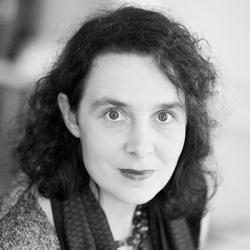Art Spaces and Social Reality
Workshop
Art Spaces and Social Reality
This workshop included lectures by Karol Sienkiewicz and Annette Urban as well as a reading workshop.
See the publications that resulted from the lectures:
- Karol Sienkiewicz: https://dfk-paris.org/en/node/1361#/resolve/articles/23147 (first edition at https://perspectivia.net/receive/pnet_mods_00000084 (pdf)).
- Annette Urban: https://dfk-paris.org/en/node/1361#/resolve/articles/23557 (first edition at https://perspectivia.net/receive/pnet_mods_00000128 (pdf)).
Lectures
Karol Sienkiewicz
“From macro- to micro-scale. Disillusionment and personal freedom”
For many years, art historians in Poland did not notice the impact of the political events of 1968 and 1970 on artistic practices. I will examine the milieu of artists that was established around the Repassage Gallery in Warsaw in 1970s, with emphasis on Elżbieta and Emil Cieślar, who ran the space, and Grzegorz Kowalski, the spiritus movens of many events there. They were all former students of Jerzy Jarnuszkiewicz in the Sculpture Department of the Warsaw Fine Arts Academy, and of the architect Oskar Hansen, originator of the Open Form theory. Hansen argued for spatial forms which were incomplete and, by their incompleteness, required the creativity or participation of viewers or “users”. But he dreamed of a macro-scale. He wanted to influence and awaken creativity in society as a whole. His teachings deeply influenced his students, with Kowalski even working as his assistant throughout the late 1960s. The late 1960s-early 1970s was an important period for these artists, with political events, students' riots in March 1968 and political unrest in 1970 leading them to redefine their approach. They focused on personal relations and small groups of close friends. The field of their activities was not society (through design or spatial forms) but a small gallery. They developed new forms of participation, based on dialogue, cooperation and games. Interestingly, Kowalski followed this path in didactics. Working from the 1980s as a professor at the Fine Arts Academy, he developed various forms of "being together" and art as a mode of communication. His students, such as Paweł Althamer and Artur Żmijewski, subsequently sought to break this bubble of intimacy and work in a macro-scale again. Similarly, Elżbieta and Emil Cieślar, after emigrating to France, virtually abandoned art altogether to become political activists using “artistic strategies”. They endeavoured to raise awareness about what was going on in Poland and how public opinion was deluded (one of their events opposed the Paris Moscow exhibition in 1979). I am interested in the notion of freedom and personal emancipation, the shift from providing an antidote to alienation to amplifying it and developing a critical approach to reality.
See the article by Karol Sienkiewicz that resulted from his lecture: https://dfk-paris.org/en/node/1361#/resolve/articles/23147 (first edition at https://perspectivia.net/receive/pnet_mods_00000084 (pdf)).
Annette Urban
“Spaces of Projection and the Permeability of their Boundaries”
If we look at the early “Environments” by Grzegorz Kowalski, such as Pocket (1968), Living Collage (1970) and Stop By (1972), the projection spaces and installations of slides or photographs are particularly revealing in terms of the new relationships that were being established between the gallery space and public social space in the late 1960s-early 1970s. Projections have the effect of creating a porosity in architectural boundaries, which extends to the institutional spaces that are contained within them. As walls are transformed into screens, so the interior space is also metamorphosed. In this way, the exhibition space, spectators and the images exhibited, often combined with a clearly-defined exterior space, become interconnected under the projection light. Organised screening spaces, such as installations, do not only make use of architectural forms and small-scale “surfaces of exchange”; projections also provide an opportunity to play with different scales, therefore significantly loosening the relationship between micro and macro scales. The passage from the interior institutional space – the enclaves of art – to the heteronomous reality of the urban environment appears to be rendered more free-flowing. The question arises as to whether the projection medium poses certain problems due to its capacity to push boundaries, particularly within very different political and social contexts. We will explore this question in reference to the work of Otto Piene, Imi Knoebel, Krzysztof Wodiczko and David Lamelas.
See the article by Annette Urban that resulted from her lecture: https://dfk-paris.org/en/node/1361#/resolve/articles/23557 (first edition at https://perspectivia.net/receive/pnet_mods_00000128 (pdf)).
Reading Workshop
Conceived by Clara Pacquet
- Peter L. Berger, Thomas Luckmann, “Introduction: The Problem of the Sociology of Knowledge”, in The Social Construction of Reality. A Treatise in the Sociology of Knowledge, New York, Anchor Books Edition, 1967, p. 1-18
- Herbert Marcuse, “Die Permanenz der Kunst. Wider eine bestimmte marxistische Ästhetik (1977)” , in id., Schriften, t. IX, Frankfurt am Main, Suhrkamp, 1987, p. 191-24
- Herbert Marcuse, La dimension esthétique. Pour une esthétique critique de l'esthétique marxiste, translated by Didier Coste, Paris, Éditions du Seuil, 1979
- Oskar Hansen, Towards Open Form / Ku Formie Otwartej, Cologne, Revolver, 2005




